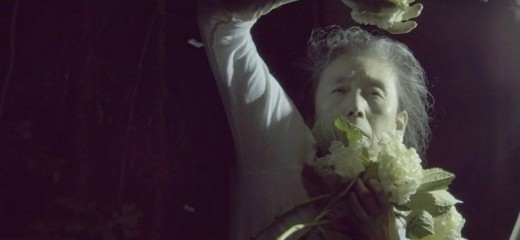
In “I Invited Myself,” Eiko Otake asks us to linger
by Ellen Miller
Eiko Otake is a giant in the dance world, but standing in front of me dressed in black, her kind, wrinkled eyes immediately put me at ease. I Invited Myself, a 10-year project begun in 2022, is an opportunity for Otake, now in her early 70s, to examine how her work can exist without her physical presence. I Invited Myself, vol. III: A Body and I Invited Myself: vol. III: Duets, are separate but related shows, representing a collaboration between the Asian Arts Initiative (AAI) and the Fabric Workshop and Museum (FWM), two Philadelphia institutions that, in addition to being a short walk from one another, share a commitment to elevating contemporary artists. Both shows present Otake’s historical work alongside more recent work, including work commissioned for the exhibitions. She completed one of these commissions, Ahhh, at the FWM the morning of the opening. Having just finished the work, Otake is in Philadelphia for the opening, and she joins the tour of both exhibitions, occasionally offering commentary as we explore.
Entering the FWM, I see a greeting from Otake written on the wall. This piece speaks to her desire to directly engage with her viewer (or audience), though her voice is present in several of the works. Ahead from the entrance, a square-shaped mosquito net hangs from the ceiling with a video projected on it. To the right are more videos, one with a pair of headphones. To the left are four hip-height boxes shielding videos from view, requiring one to lean over and peer inside to view them.
In A Night With Moths, projected onto the mosquito net, Otake looks into a light while moths flit around her face. Her arms move slowly as she raises them above her head; a moth alights on her cheek. It is this piece I return to again and again as I circle the room, watching the movement of Otake, the movement of the moths, and her hand as she touches the moth on her cheek. Otake lifts two hydrangea blooms to her face, and the petals, nearly the shape of moth wings, blur together with the moths. Three living forms, all in motion. On the mosquito net, the image is soft; the fabric is its own sort of dance, as Otake’s projected body is visible on multiple surfaces at the same time.
Just a 10-minute walk away, Otake’s exhibition at AAI begins before you’ve entered the building. Two videos and several photographs are visible from AAI’s storefront, a large window facing Vine Street. Best viewed at night, these pieces provide an opportunity for even accidental viewers to encounter Otake’s work. Once inside, I am arrested by A Body in Tokyo, two videos (Shibuya River Culvert and Abandoned Subway Station) playing simultaneously. While on two different walls, they meet at the corner, blurring the lines between one and the other into a cohesive work. The videos are distinct. In Shibuya River Culvert, Otake wades in the water, at times barefoot. Her movement is slow and measured as the water rushes past her ankles. In Abandoned Subway Station, Otake explores a vast subway station and engages with the objects she finds, for example pulling a long hose up a flight of stairs, one hand over the other. The merging of these videos to make A Body in Tokyo feels like choreography in itself; dancing with a projector while projecting videos of herself dancing, Otake creates a sort of reflective dance with her present and past selves.
The placement of Otake’s work and its staging is significant; at both AAI and FWM, she serves as a co-curator, shaping how her work is presented to the public, an opportunity not often provided to artists. At FWM, she insisted the mosquito net be used; at AAI she brought costumes (often clothing from loved ones, such as her grandmother’s kimono) from her videos, which are staged on the floor. These elements physicalize the experience so it is more than just a series of videos on a wall, but, as AAI curator Joyce Chung describes, an immersive experience.
Time-based work is tricky in a gallery setting. Otake’s videos range in length; some are a couple minutes long, but others, like the subway video, last over 15 minutes. Across both exhibitions there are 20 videos; you could easily spend the entire afternoon watching. What Otake’s work reminds me is that dance is more than a combination of pirouettes or specific techniques. At its core, dance is about movement and intentionality. Otake is telling a story with her body, and it is one she wants you to be a part of.
To walk through the galleries with Otake herself was an immense privilege. Towards the end of our time together, she describes how, to her, the work does not exist until it is viewed by someone else. Otake wants her work to draw you in. “Can you stay a little longer?” she asks, her fingertips light on my arm. Her goal is to engage with you, whether she is physically in the space with you or not. In our hurried world, she invites you to linger, to watch, and return to watch again. Will you take the time?
Read thINKingDANCE's recent coverage Otake's film No Rule is Our Rule, also presented at the Asian Arts Initiative.
I Invited Myself, vol. III: A Body, Eiko Otake, Asian Arts Initiative, Sept. 9-Dec. 9, 2023, and I Invited Myself, vol. III: Duets, Eiko Otake, The Fabric Workshop and Museum, Nov. 9, 2023-March 24, 2024.
By Ellen Miller
November 17, 2023


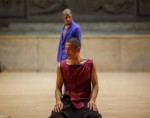
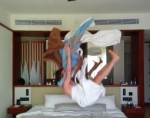
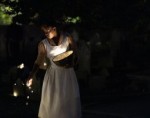
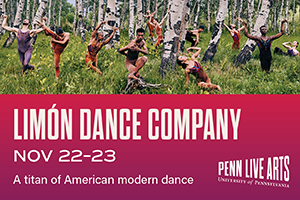
.png)


